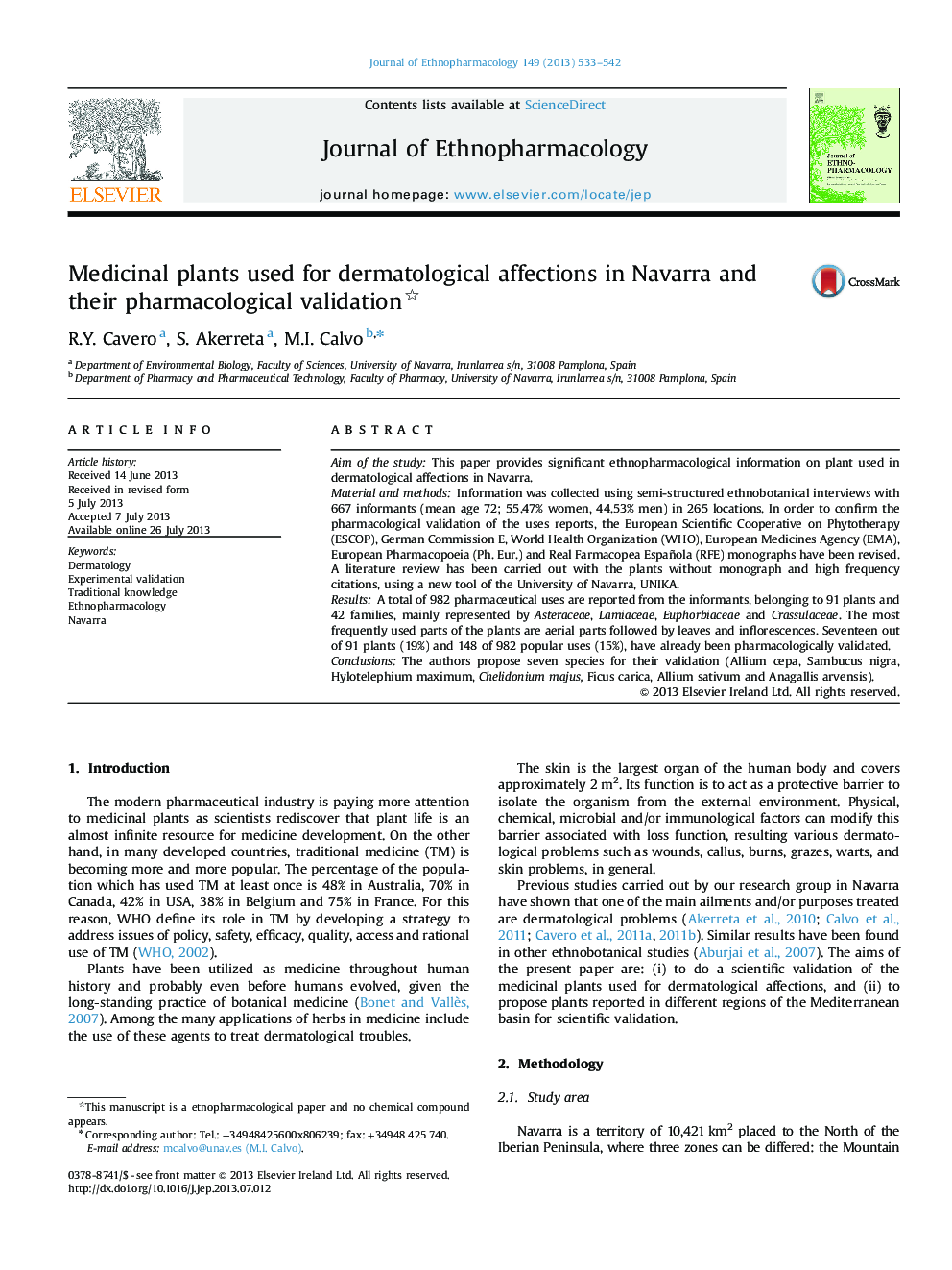| Article ID | Journal | Published Year | Pages | File Type |
|---|---|---|---|---|
| 5837217 | Journal of Ethnopharmacology | 2013 | 10 Pages |
Aim of the studyThis paper provides significant ethnopharmacological information on plant used in dermatological affections in Navarra.Material and methodsInformation was collected using semi-structured ethnobotanical interviews with 667 informants (mean age 72; 55.47% women, 44.53% men) in 265 locations. In order to confirm the pharmacological validation of the uses reports, the European Scientific Cooperative on Phytotherapy (ESCOP), German Commission E, World Health Organization (WHO), European Medicines Agency (EMA), European Pharmacopoeia (Ph. Eur.) and Real Farmacopea Española (RFE) monographs have been revised. A literature review has been carried out with the plants without monograph and high frequency citations, using a new tool of the University of Navarra, UNIKA.ResultsA total of 982 pharmaceutical uses are reported from the informants, belonging to 91 plants and 42 families, mainly represented by Asteraceae, Lamiaceae, Euphorbiaceae and Crassulaceae. The most frequently used parts of the plants are aerial parts followed by leaves and inflorescences. Seventeen out of 91 plants (19%) and 148 of 982 popular uses (15%), have already been pharmacologically validated.ConclusionsThe authors propose seven species for their validation (Allium cepa, Sambucus nigra, Hylotelephium maximum, Chelidonium majus, Ficus carica, Allium sativum and Anagallis arvensis).
Graphical abstractDownload high-res image (132KB)Download full-size image
